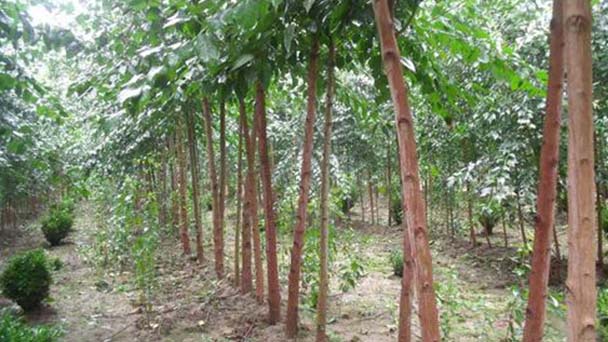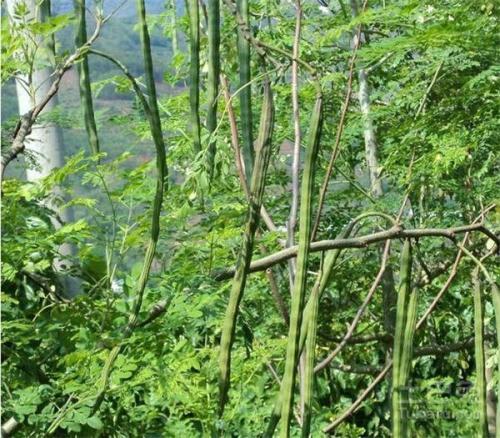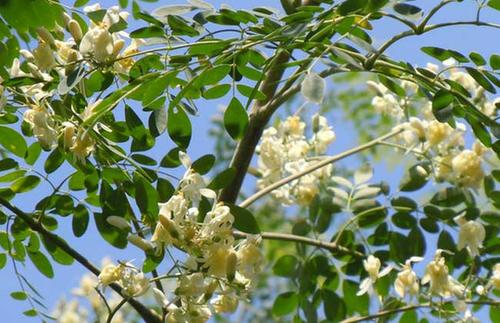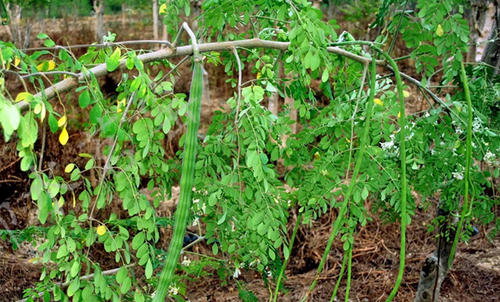How to grow and care for Drumstick Tree
Written by Maggie
Jan 11 2021

If you have a rooftop garden, you prefer Drumstick Tree. Because of Drumstick Tree's usability and aesthetic appeal, it's hard for many would-be gardeners to resist. Drumstick tree is growing in popularity due to its fast growth, rich nutrition and cute appearance. The following is how to grow and care for Drumstick Tree.

How to grow Drumstick Tree
1. Get seeds from a store.
There are many varieties, but elephant hornwood and African drumstick tree seeds are the easiest to get. The seeds of the hornwood are brown, like wings; On the right hand side, the drumstick tree seeds are yellowish-brown. Obviously, they're not similar, but they're both Drumstick Tree seeds.
As a fast-growing tree, they also grow leaves, flowers and fruits -- called drumsticks. Choose hornwood in the first year. In addition, it is best to keep Drumstick Tree at a manageable height, why? Simply because it is easier to harvest the leaves and pods. Hang the drumsticks containing the Drumstick tree at the top of the tree. When the pod is dry, plant it or store it for later planting.
If you want the trees to grow fast and have lots of leaves so you can easily collect them for the cooking task, choose Moringa.
In Africa, those flowers and fruit pods take longer to develop Drumstick Tree oleifera, a variety of Drumstick Tree.
Although Drumstick Trees grow in one tree, they are very different. In fact, the seeds are roughly the same size, but from the outside they don't look alike. Moringa species are round brownish, like wings. The husked seeds are almond-shaped and light brown.
2. Decide where you want to plant a Drumstick tree.
Keep in mind that in the first year, Drumstick Tree can be more than 6 meters tall. Their average growth height is about 4.5 meters, however, under optimal conditions, they grow much higher. In general, since branches grow to a circumference of 0.9 to 1.2 meters in the first year, you need to consider whether you should plant the tree near a building. Drumstick Tree needs plenty of sun, warm and humid conditions to grow -- so consider where Drumstick Tree gets the most light.
3. Find the best organic potting soil you can.
Drumstick trees do not grow in hard, clay, or vermiculite soils. They tend to grow well in poor, sandy, and lean soils, but their roots don't need much water. If necessary, buy some sand and mix it with potting soil, or use any soil you can find near you to mix it with coconut shell fiber, peat, perlite, or loose soil. All of this allows the Drumstick tree root to grow freely and drain well, and the Drumstick tree has a taproot, which means it has a single root that can grow down, just like a carrot. It has small absorption roots, but no branches. So we need to plant the Drumstick tree where we have enough room for it to grow down. If you want to plant it in a pot, find as deep a pot as you can.Drumstick tree can be planted individually, in rows or in circles.
If you want to plant it in a circle, place it in soil about 30 cm above the ground. Trim the newly grown leaves, forcing them to grow like bushes, and once they reach 60 centimeters, cut the branches in half lengthwise, pruning the new leaves that are about to sprout at the top.
If you plan to plant Drumstick trees in rows, the seeds should be spaced about 0.9 meters apart and at least 1.8 meters between rows to facilitate weed removal and pedestrian passage.
If you plan to plant a single plant, remember to leave enough space for the leaves to fully unfold. Trim the top of the tree regularly to encourage growth and cut the branches in half. All of this will ensure that Drumstick Tree will thrive and, in a few years, produce many beautiful flowers, edible leaves and fruit.
4. Dig a hole and drop the moringa seeds into a hole about 2 to 2.5 centimeters deep. Cover the earth and tamp it down.
Leave a mark after you plant the seeds so you can watch them grow. Once the soil is covered, water the soil thoroughly. Whether you plant them in a pot or in a field, they need to be watered every day. Once they germinate, you can water them every other day until they are 4.8 meters tall.Then, watering it once a week is enough.
Some people soak tree species in water until they germinate and then plant them. This approach works, but the Drumstick tree species is so robust that this extra step is not required. Place the pruned tree in a large tub filled with earth. The trees need to be watered every day, and the water needs to flow freely. In about two weeks, the shoots will grow along the cut and the seedlings will come out from the bottom.

How to care for Drumstick Tree
Cutting propagation. Cut off branches about 5 to 6.5 centimeters in diameter and 5 to 6.5 centimeters long, and cut along a 45 Angle at the base of the branches to leave more space for contact with the soil. Then insert the cutting surface into the soil and bury about 20-23 cm of the stem in the soil. Water regularly, and soon new leaves will grow from the stem. The advantage of cuttings is that they grow and bloom faster than other plants that develop from seeds. The Drumstick tree from cuttings still retains the characteristics of the mother plant.
Because Drumstick trees grow so quickly, the easiest way to keep them at a certain height is to clip new leaves at the top and cut half of the branches lengthways. This will help encourage the moringa branches to spread along the trunk, preventing it from growing into a 30-foot-tall tree, where buds, petals, leaves and pods are hard to pick.
Drumstick Tree is drought-tolerant but not cold-tolerant, with severe cold leading to the death of the tree.
If you want to pick those fruits, keep them around 8 to 12 feet high. If you don't trim it, you'll end up with a tall, thin, ugly tree with branches at the top that are hard to reach.
Keep those trimmers within easy reach. The more you prune them, the more often they grow.
Frequently trim Drumstick trees from the top. This will help the trees grow more branches down the trunk. You can also cut off half of the branches to force the new leaves to grow at the branches of the main branch. Don't throw away the trimmed leaves. Throw them under a tree and use them as the best mulch to keep weeds from growing.

Latest Updated
- Benefits of Bugleweed - 7 Science-backed Health Benefits
- Bugleweed Dangers & Side Effects - Is It Poisonous?
- How to Plant Evergreen Trees - What You Should Know
- When to Plant Evergreens - Grow Guide for Evergreen Trees
- 12 Wonderful Evergreen Shrubs for Your Garden
- 12 Popular Evergreen Plants with Pictures for Beginners
- When And How To Prune A Lilac Bush Like a Pro
- How to Grow & Care for Lilac Vine (Hardenbergia Violacea)
- Japanese Lilac Tree (Syringa Reticulata) Care & Propagation Guide
- Shumard Oak Pros and Cons - What to Know
Popular Articles
- Winter maintenance of Antirrhinum Majus
- How to Grow Terminalia Mantaly Tree
- How to Grow and Care for Crossostephium Chinense
- How to grow Antirrhinum Majus in spring
- Peristeria Elata (Dove Orchid) Profile: Info & Care Guide
- Underwatered Snake Plant (Sansevieria Trifasciata) - Signs And How To Fix
- How to Care for Brazilian Jasmine Plant (Mandevilla Sanderi)
- How to Grow & Care for Graptopetalum Purple Delight in Summer
- Rosa Chinensis (China Rose): Plant Growing & Care Tips
- How to Care for Baby Sun Rose (Aptenia Cordifolia)